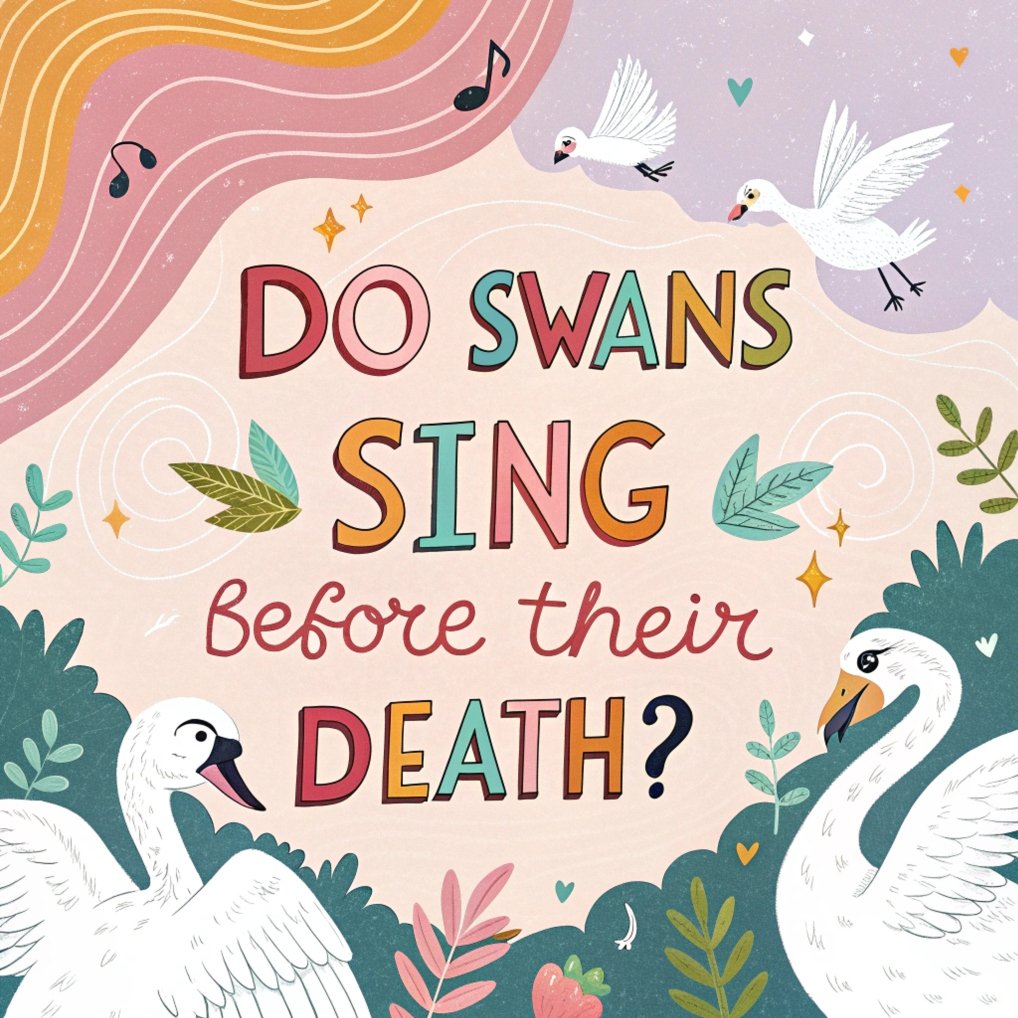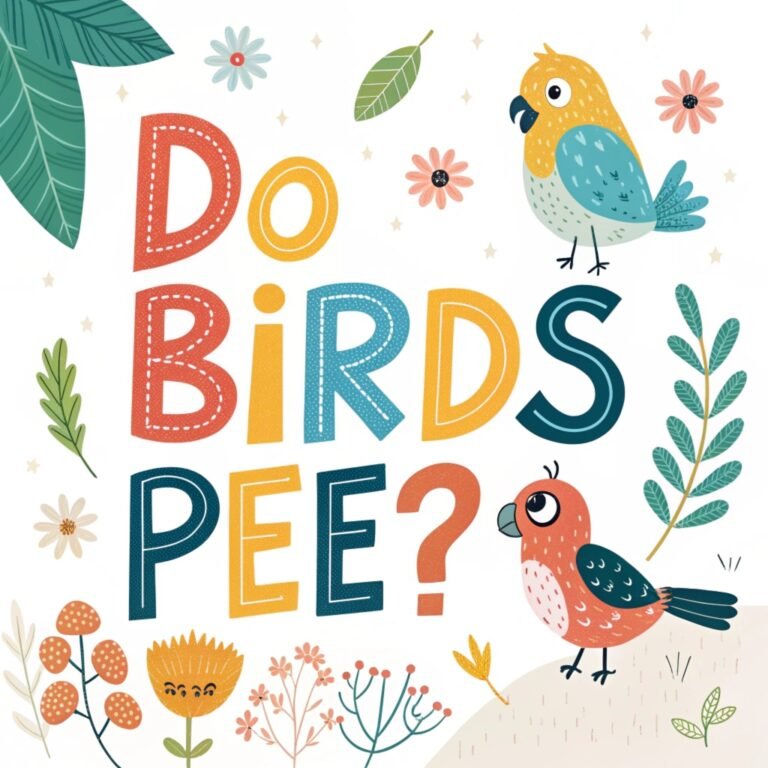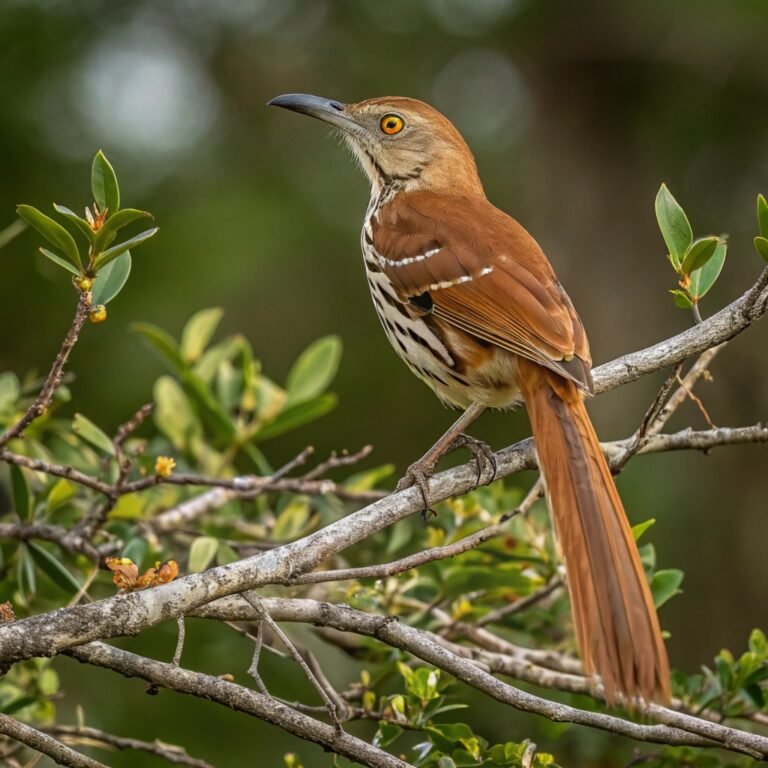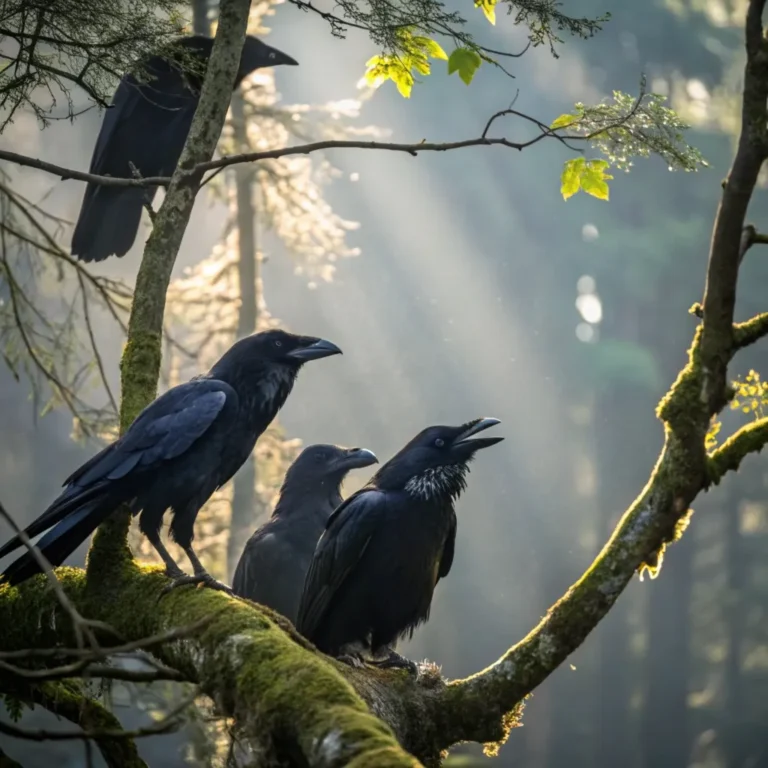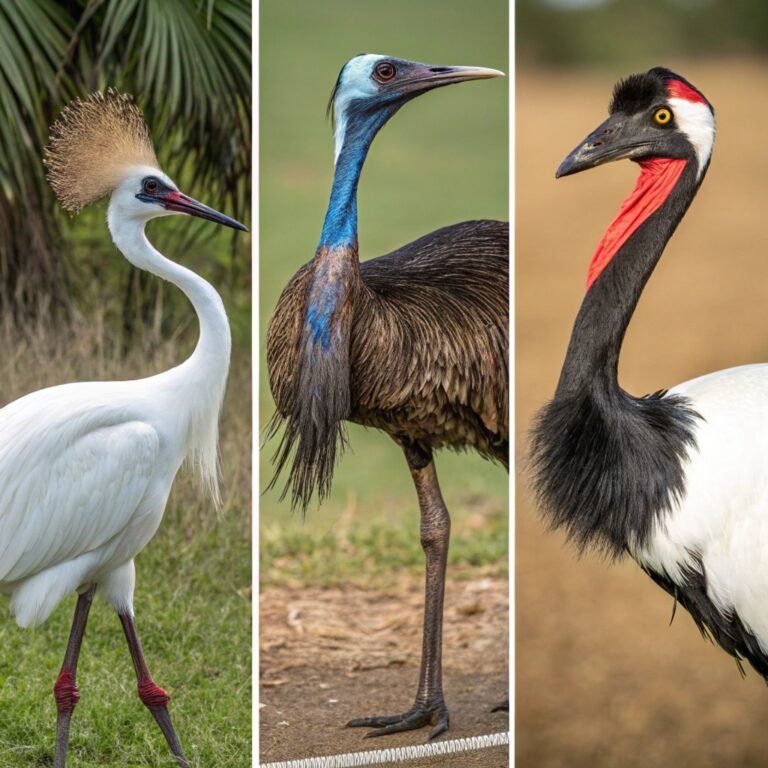Do Swans Sing Before Their Death? – Truth Behind Swans’ Final Melody Before Death
For centuries, the haunting image of a swan singing its final, beautiful song before death has captivated human imagination.
This poetic concept, known as the “swan song,” has permeated literature, art, and popular culture, becoming a powerful metaphor for a grand finale or last hurrah.
In this comprehensive exploration, we dive deep into the world of swans, examining their vocalizations, behavior, and the scientific reality behind their supposed final performance.
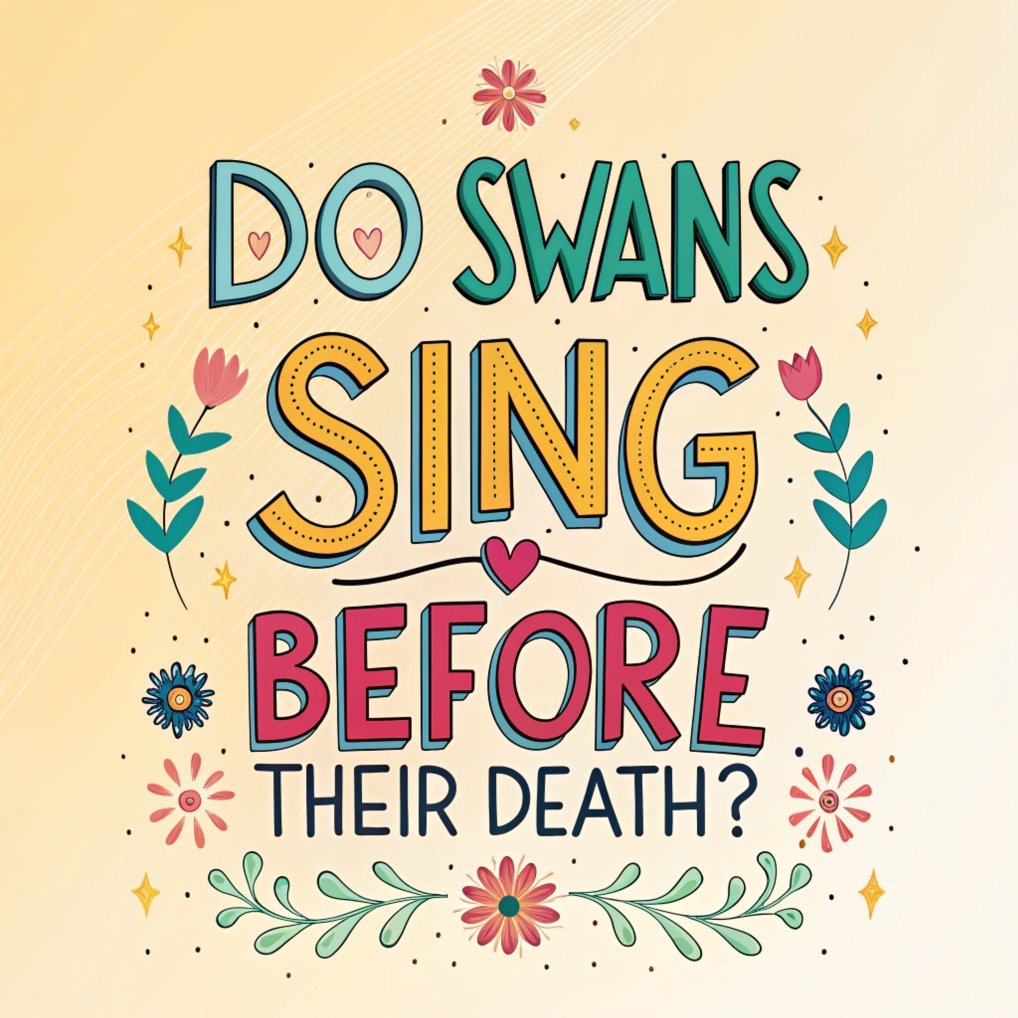
Key Takeaways
- The swan song myth is just that – a myth: Scientific evidence shows that swans do not sing a special song before dying. Their vocalizations remain consistent throughout their lives.
- Swans have a diverse vocal repertoire: While not melodious singers, swans produce various sounds including honks, hisses, and grunts for communication.
- Cultural significance: The swan song myth has deeply influenced art, literature, and language, becoming a metaphor for final performances or acts.
- Anatomical facts: Swans’ unique vocal anatomy, particularly the syrinx, allows them to produce their characteristic sounds, but not melodious songs.
- Conservation challenges: Swans face threats from habitat loss, pollution, and climate change, highlighting the need for effective conservation strategies.
- Behavioral insights: Swans exhibit complex social behaviors, strong pair bonds, and sophisticated communication methods throughout their lives.
- Species diversity: There are several swan species worldwide, each with unique characteristics and adaptations to their specific habitats.
- Debunking misconceptions: Common myths about swan aggression and mating habits are often exaggerated or false.
- Scientific research: Modern studies using advanced technologies are providing new insights into swan biology, behavior, and migration patterns.
- Ecotourism impact: Swans play a significant role in wildlife photography and ecotourism, bringing both benefits and challenges to conservation efforts.
This exploration not only debunks a persistent myth but also reveals the true wonders of swan biology and behavior, emphasizing the importance of scientific understanding in appreciating and conserving these magnificent birds.
The Origin and Meaning of the Swan Song Myth
The swan song myth has captivated human imagination for centuries. This ancient belief suggests that swans, typically silent throughout their lives, burst into a beautiful, melodious song just before they die.
The phrase “swan song” has since become a metaphor for a final, often magnificent, performance or gesture before one’s retirement or death.
Originating in ancient Greek mythology, this concept gained proverbial status by the 3rd century BCE. The legend’s enduring appeal lies in its poetic nature, symbolizing grace and beauty even in life’s final moments.
Over time, the myth has been perpetuated through literature, art, and popular culture, cementing its place in our collective consciousness.
Despite its widespread acceptance, the scientific validity of this belief has long been questioned, prompting researchers and ornithologists to investigate the true nature of swan vocalizations and behavior.
Historical References to the Swan Song in Literature and Art
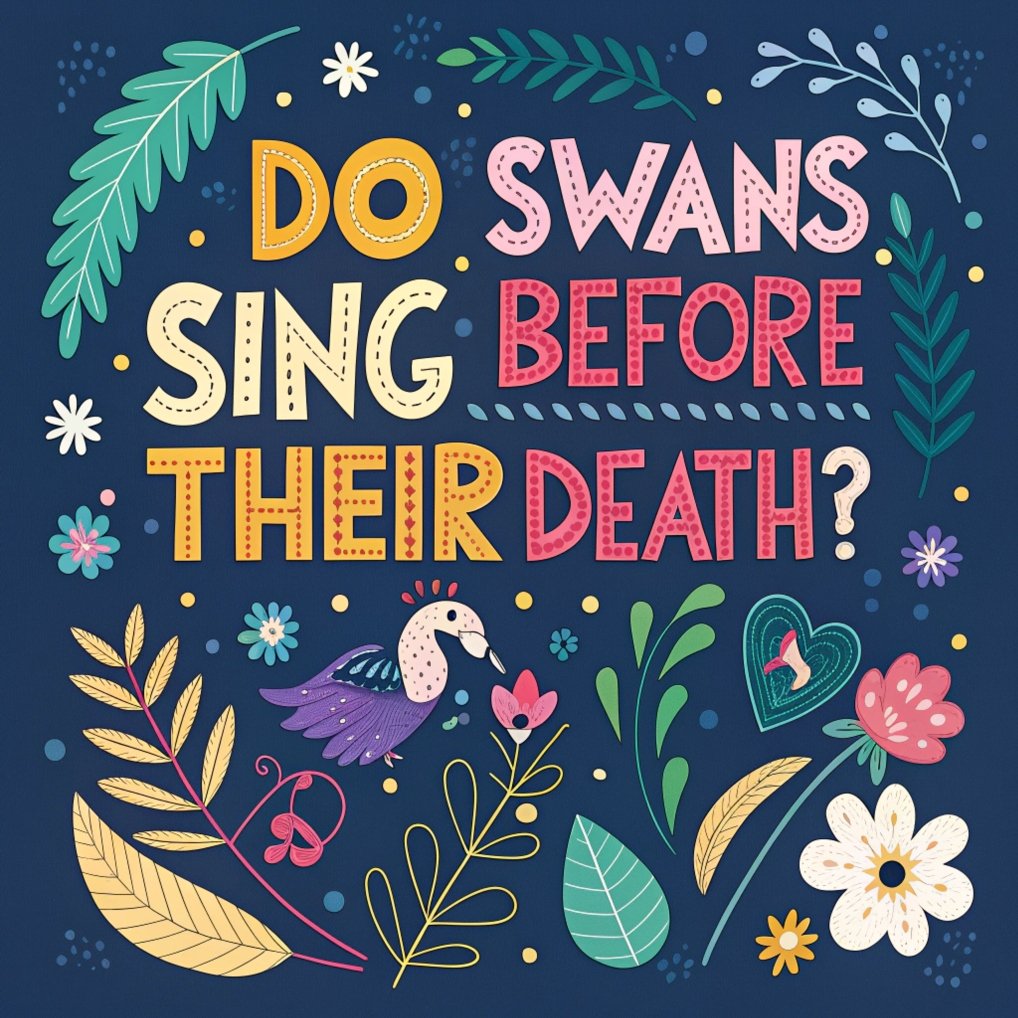
The swan song myth has been a recurring theme in literature and art throughout history. Ancient Greek philosophers and writers frequently referenced this belief in their works.
Plato’s “Phaedo” mentions swans singing beautifully before death, interpreting it as a joyful anticipation of the afterlife.
Roman poet Ovid incorporated the legend in “The Story of Picus and Canens,” describing a swan’s mournful dirge. In later centuries, renowned writers like Geoffrey Chaucer and William Shakespeare perpetuated the myth in their works.
Shakespeare referenced the swan song in both “The Merchant of Venice” and “Othello,” further embedding the concept in Western literature.
Artists and composers have also drawn inspiration from this legend, creating paintings, sculptures, and musical pieces that depict or allude to the swan’s final song.
This widespread cultural adoption has contributed to the myth’s longevity, despite the lack of scientific evidence supporting it.
The Scientific Reality: Do Swans Actually Sing?
Contrary to the poetic myth, scientific research reveals that swans do not sing in the traditional sense, especially not before death. Swans belong to the Anatidae family, which includes ducks and geese, and are not known for melodious vocalizations.
While swans are not entirely mute, their vocal repertoire consists mainly of honks, hisses, and grunts. These sounds serve various purposes in swan communication, such as territorial defense, mating calls, and warning signals.
The Mute Swan, ironically named, does produce vocalizations, albeit less frequently than other swan species.
Ornithologists have observed that swans’ vocal abilities remain consistent throughout their lives, with no significant change in vocalization patterns near death.
The misconception of a swan’s death song may have originated from the whooper swan’s unique anatomy. Its long windpipe, coiled within its breastbone, can produce resonant sounds when air escapes post-mortem, possibly contributing to the myth’s persistence.
Swan Behavior and Communication Patterns
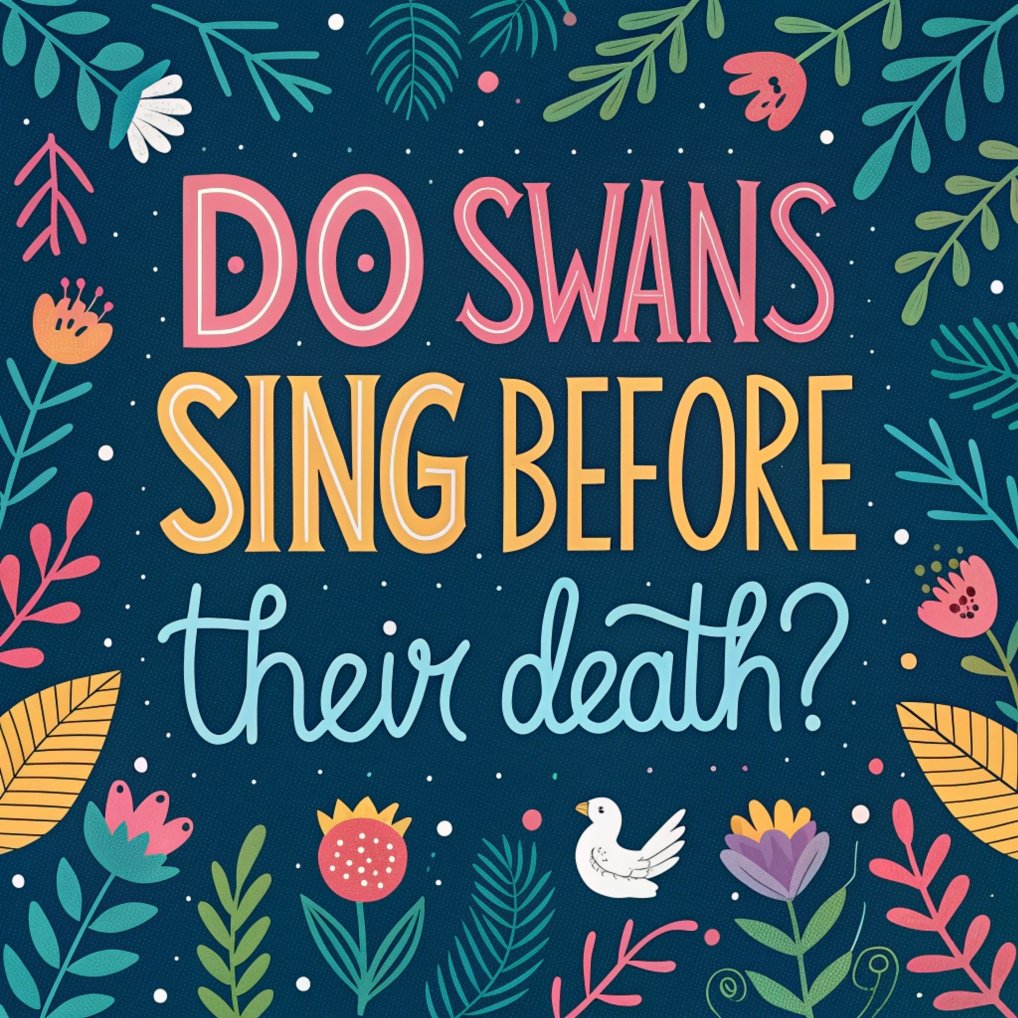
Swans exhibit complex behavior and communication patterns throughout their lives. These majestic birds are known for their strong pair bonds and protective nature, especially during the breeding season.
Male swans, called cobs, are particularly aggressive in defending their territory, mate, and cygnets.
Their communication includes a variety of visual displays and vocalizations. The “busking” posture, where a swan raises its wings and arches its neck, serves as a warning display to potential threats.
Vocalizations play a crucial role in swan interactions, with different calls used for various purposes.
Swans use low grunts for close-range communication within the family unit, while loud trumpeting calls serve to announce their presence or warn off intruders.
During courtship, pairs engage in synchronized swimming and head-bobbing displays, accompanied by soft vocalizations.
These behaviors demonstrate the sophisticated communication methods swans employ throughout their lives, rather than a single, mythical death song.
The Role of Swans in Ecosystems and Their Conservation Status
Swans play significant roles in their ecosystems as both herbivores and prey species. Their feeding habits, which include consuming aquatic vegetation, help maintain the balance of plant life in wetland habitats.
Swans also contribute to seed dispersal, aiding in the propagation of various plant species.
As large, conspicuous birds, they serve as indicator species for the health of wetland ecosystems.
However, swan populations face various challenges due to habitat loss, pollution, and human activities. Conservation efforts focus on protecting wetland habitats and managing human-swan interactions.
Some swan species, like the Trumpeter Swan in North America, have been the subject of successful conservation programs, recovering from near-extinction.
Understanding the true nature of swan behavior and ecology is crucial for effective conservation strategies, moving beyond romanticized myths to address real-world challenges facing these iconic birds.
Cultural Impact of the Swan Song Myth
The swan song myth has left an indelible mark on human culture, influencing art, literature, and language.
The phrase “swan song” has become a common idiom in many languages, used to describe a final, often noteworthy, act or performance.
In music, composers have created pieces inspired by the legend, such as Saint-Saëns’ “The Swan” from “The Carnival of the Animals.” The myth has also inspired numerous poems, paintings, and sculptures throughout history.
In modern times, the concept of a swan song has been applied to various fields, including sports, politics, and entertainment, referring to an individual’s final public appearance or work.
This cultural pervasiveness demonstrates how deeply ingrained the myth has become in collective consciousness, transcending its original context to become a powerful metaphor for finality and legacy.
Debunking Common Misconceptions About Swan Behavior
Many misconceptions about swan behavior persist, often rooted in the romanticized image perpetuated by the swan song myth.
One common belief is that swans are inherently aggressive and dangerous to humans. While male swans can be territorial during breeding season, unprovoked attacks on humans are rare.
Another misconception is that swans mate for life and die of heartbreak if their partner dies. While swans do form strong pair bonds, they can and do find new mates if necessary.
The idea that swans can break a person’s arm with their wings is also exaggerated; while their wings are strong, such severe injuries are highly unlikely.
Understanding these misconceptions is crucial for promoting responsible interactions between humans and swans, ensuring the safety of both and supporting conservation efforts.
The Anatomy of Swan Vocalization: How Swans Produce Sounds
Swan vocalizations, while not melodious songs, are produced through a complex anatomical structure.
The syrinx, the avian equivalent of the mammalian larynx, is responsible for sound production in swans. Located at the junction of the trachea and bronchi, the syrinx allows swans to produce a range of vocalizations.
The length and structure of a swan’s trachea, particularly in species like the Trumpeter Swan, contribute to the resonance and volume of their calls.
Swans can manipulate the tension of membranes in the syrinx and control airflow to produce various sounds.
The Whooper Swan, known for its loud, trumpet-like calls, has a particularly long and convoluted trachea that amplifies its vocalizations.
Understanding this anatomy helps explain why swans produce the sounds they do, rather than the mythical death song.
Swan Species Around the World and Their Unique Characteristics
There are several swan species found across the globe, each with its own unique characteristics.
The Mute Swan, native to Europe and parts of Asia, is perhaps the most recognizable, with its curved neck and orange bill. The Trumpeter Swan and Tundra Swan are native to North America, known for their loud, resonant calls.
Australia is home to the Black Swan, distinctive for its dark plumage. The Whooper Swan and Bewick’s Swan are found in northern Eurasia and are known for their long-distance migrations.
Each species has adapted to its specific habitat, developing unique feeding strategies, migration patterns, and social behaviors.
While none of these species sing in the way the myth suggests, they all have their own vocal repertoires that serve important functions in their daily lives and annual cycles.
The Importance of Swans in Various Cultures and Mythologies
Swans have held significant symbolic meaning in various cultures throughout history, often representing grace, purity, and transformation.
In Greek mythology, Zeus transformed into a swan to seduce Leda, resulting in the birth of Helen of Troy. Norse mythology features swan maidens, supernatural beings who could transform between human and swan form.
In Hinduism, the swan or “hamsa” is associated with Saraswati, the goddess of knowledge and arts.
Celtic traditions often depict swans as symbols of love and loyalty. In many Native American cultures, swans are seen as powerful spirit animals.
These cultural associations have contributed to the swan’s elevated status in human consciousness, perhaps making the idea of a beautiful swan song more appealing and persistent despite its lack of scientific basis.
Conservation Efforts and Challenges in Protecting Swan Populations
Conservation of swan populations faces various challenges globally. Habitat loss due to urbanization and agricultural expansion remains a significant threat.
Pollution, particularly lead poisoning from ingested fishing weights, poses a serious risk to swan health. Climate change affects migration patterns and breeding grounds, especially for Arctic-nesting species.
Conservation efforts include habitat protection and restoration, regulation of hunting, and public education programs.
Successful initiatives, such as the recovery of the Trumpeter Swan in North America, demonstrate the potential for effective conservation.
However, ongoing challenges include managing human-swan conflicts in urban areas and mitigating the impacts of agricultural practices on swan habitats.
International cooperation is crucial, as many swan species are migratory and require protection across multiple countries.
The Role of Swans in Modern Wildlife Photography and Ecotourism
Swans have become popular subjects in wildlife photography and ecotourism, attracting enthusiasts worldwide.
Their striking appearance and graceful movements make them ideal photographic subjects, especially in natural settings like lakes and wetlands.
Ecotourism centered around swan watching has grown, particularly in areas known for large congregations of migratory swans.
This interest has positive aspects, raising awareness about swan conservation and generating income for local communities.
However, it also presents challenges, such as potential disturbance to swan habitats and behavior.
Responsible ecotourism practices and wildlife photography ethics are essential to ensure that human interest in swans contributes positively to their conservation rather than causing harm.
Scientific Studies on Swan Behavior and Communication
Recent scientific studies have significantly advanced our understanding of swan behavior and communication.
Research using acoustic analysis has revealed the complexity of swan vocalizations, identifying distinct calls for different situations. Studies on pair bonding have shown that swans engage in sophisticated courtship rituals and maintain strong family units.
Behavioral ecologists have observed intricate social structures within swan populations, including hierarchies and territorial behaviors.
Research on swan migration has utilized GPS tracking to map detailed flight paths and stopover sites, providing crucial information for conservation efforts.
These scientific insights not only debunk myths like the swan song but also provide valuable knowledge for swan management and protection.
The Future of Swan Research and Conservation
The future of swan research and conservation looks promising, with new technologies offering unprecedented insights into swan biology and behavior.
Satellite tracking and DNA analysis are revealing more about swan migration patterns and population genetics.
Emerging threats, such as the impact of microplastics in aquatic environments, are becoming new areas of study.
Conservation efforts are increasingly focusing on ecosystem-wide approaches, recognizing the interconnectedness of swan habitats with other species and environmental factors.
Public engagement and citizen science projects are likely to play a growing role in swan conservation, fostering a deeper connection between communities and these charismatic birds.
As our understanding of swans continues to evolve, it’s clear that separating myth from reality is crucial for effective conservation and appreciation of these magnificent creatures.
FAQs
Do swans really sing before they die?
No, swans do not sing a special song before dying. This is a myth with no scientific basis. Swans make various vocalizations throughout their lives, but these do not change significantly near death.
What sounds do swans actually make?
Swans produce a range of vocalizations including honks, hisses, and grunts. These sounds vary among species but are generally not considered melodious or song-like.
Are swans aggressive towards humans?
Swans can be territorial, especially during breeding season, but unprovoked attacks on humans are rare. Respecting their space and not approaching nesting areas can prevent conflicts.
How long do swans typically live?
In the wild, swans can live 20-30 years, depending on the species and environmental conditions. In captivity, they may live even longer.
Can swans break a person’s arm with their wings?
This is largely a myth. While swan wings are strong, they are not capable of breaking human bones. However, a blow from a swan’s wing can cause bruising.
Do swans mate for life?
Swans often form long-term pair bonds, but they can find new mates if their partner dies. The notion of swans mating for life is somewhat romanticized.
How can people help in swan conservation?
People can help by supporting wetland conservation, avoiding disturbing swan habitats, properly disposing of fishing gear, and participating in citizen science projects that monitor swan populations.

Hello, I’m Emily Price, the founder of Birds Affection. As a passionate bird enthusiast and spiritual seeker, I’ve always been fascinated by the symbolic meanings and mystical connections between birds and our lives. On this website, I share my knowledge and insights on the spiritual significance of various bird species, exploring their roles as messengers, guides, and teachers. Through my writing, I aim to inspire and educate others on the profound wisdom and beauty that birds bring to our world. Join me on this journey as we delve into the enchanting realm of bird symbolism and discover the hidden meanings behind these magnificent creatures.

